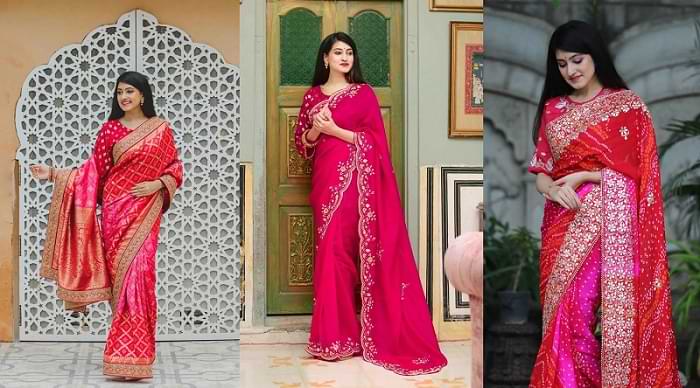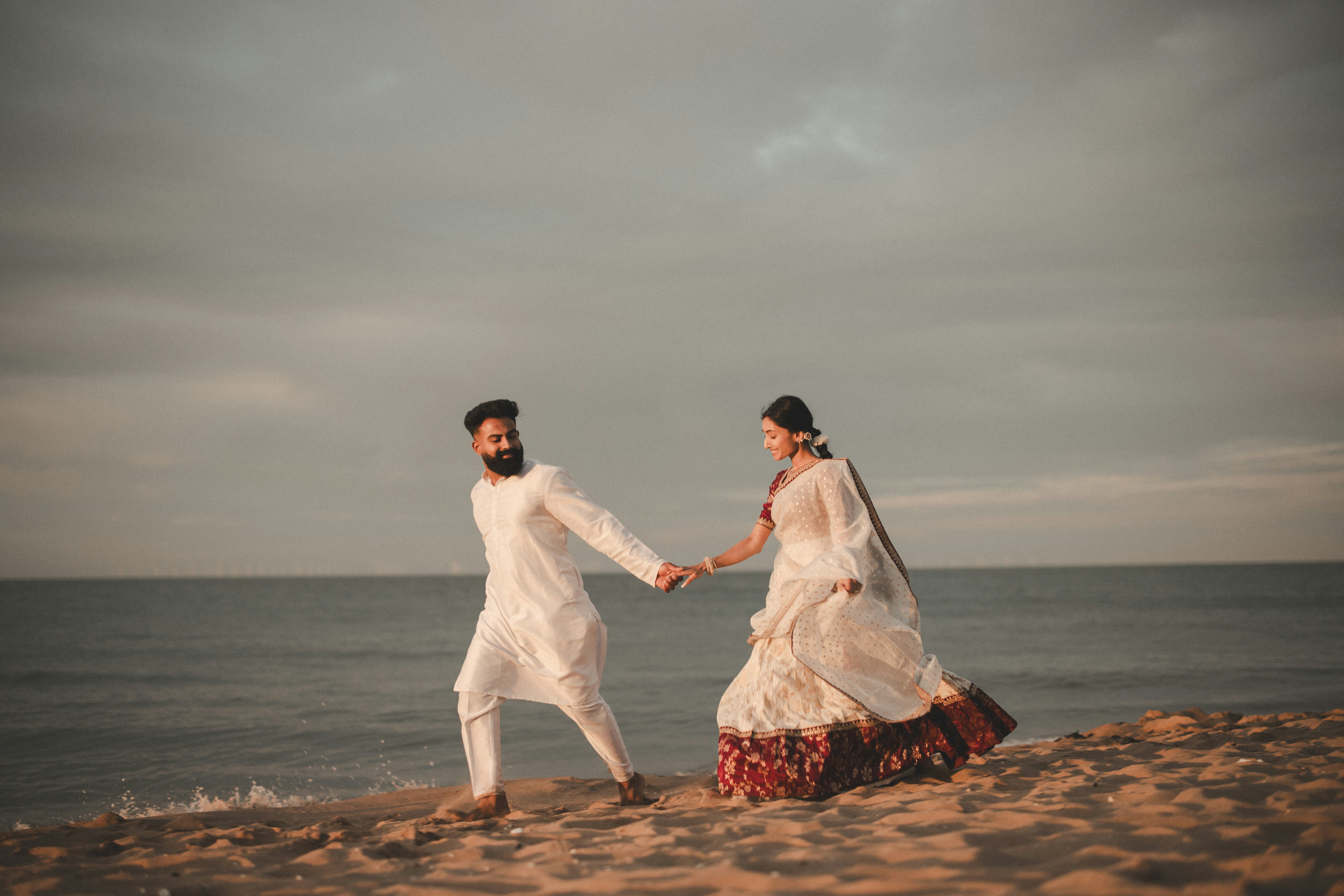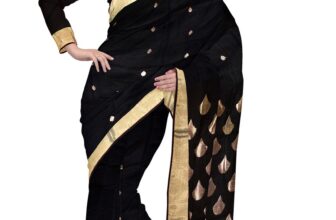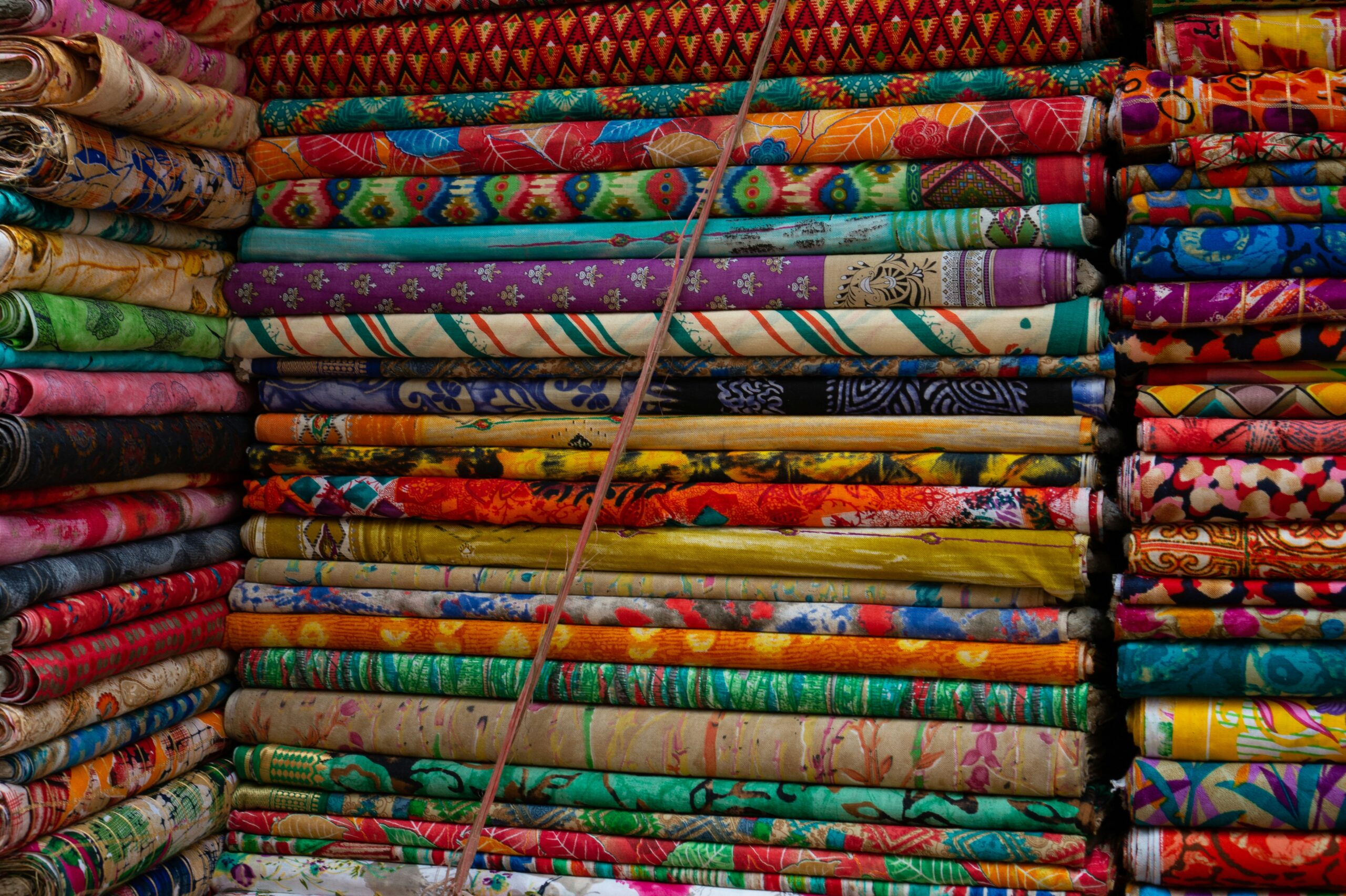
The saree, an unstitched garment usually six to nine yards in length, has been a symbol of grace and tradition across India for centuries. Each region of India has its own unique saree style, each with a distinctive fabric, weaving technique, design, and cultural heritage. Let’s take a journey across India to explore the regional saree styles that have shaped the fashion landscape and tell the stories of India’s rich textile heritage.
1. Banarasi Saree – Varanasi, Uttar Pradesh
Banarasi sarees are among the most prized sarees in India, known for their rich fabrics and intricate patterns. Woven in Varanasi, these sarees often feature silver and gold zari (brocade) work inspired by Mughal designs, including floral motifs, intertwining leaves, and intricate border work. The craftsmanship of Banarasi sarees has been passed down through generations of artisans, making each piece a work of art. These sarees are often worn at weddings and grand celebrations and symbolize opulence and luxury.
2. Kanjeevaram Saree – Tamil Nadu
Kanjeevaram sarees, from Tamil Nadu, are known for their durability and lustrous silk. These sarees are handwoven with pure mulberry silk and have contrast borders adorned with temple designs, peacocks, and floral patterns. Each Kanjeevaram saree has a unique blend of colors, with bold and vibrant hues, making them suitable for weddings and festive occasions. The hallmark of a Kanjeevaram saree is the intricate interlocking weave of silk and zari threads, which enhances both its strength and beauty.
3. Chanderi Saree – Madhya Pradesh
Named after the town of Chanderi in Madhya Pradesh, Chanderi sarees are known for their sheer texture and lightweight fabric, making them perfect for warm climates. Woven in a blend of silk and cotton, these sarees often feature motifs like flowers, birds, and geometric patterns. The use of fine zari gives Chanderi sarees an elegant sheen, without the heaviness of traditional silk sarees. Chanderi sarees are ideal for semi-formal and formal events, especially in warmer weather.
4. Paithani Saree – Maharashtra
The Paithani saree, originating from Paithan in Maharashtra, is celebrated for its intricate weaving and rich colors. Often made with pure silk, Paithani sarees feature elaborate borders with motifs like parrots, lotuses, and peacocks, inspired by nature and the Ajanta caves. The “kairi” or paisley design is a prominent feature of Paithani sarees. The characteristic blend of colors, created by using different-colored threads for the warp and weft, gives the saree an iridescent quality that is both regal and mesmerizing.
5. Bandhani Saree – Gujarat and Rajasthan
Bandhani sarees are a form of tie-dye sarees traditionally crafted in Gujarat and Rajasthan. The technique involves tying small portions of the fabric with threads before dyeing to create intricate dot patterns in various colors. Bandhani sarees are usually made from cotton or silk and come in vibrant colors, representing joy and festivity. These sarees are commonly worn during traditional celebrations and festivals, with each region in Gujarat and Rajasthan having its distinct Bandhani style.
6. Patola Saree – Patan, Gujarat
The Patola saree from Patan in Gujarat is one of the most complex and intricate sarees to produce, using the double-ikat weaving technique. Both the warp and weft threads are dyed before weaving, resulting in a reversible pattern. Patola sarees are highly valued for their geometrical and symmetrical designs, often in patterns like elephants, flowers, and birds. Known for their durability and vivid color, these sarees are a prized possession, representing high craftsmanship and cultural pride.
7. Baluchari Saree – West Bengal
Baluchari sarees from West Bengal showcase intricate and detailed motifs, often depicting scenes from Indian mythology. These sarees are woven in a tapestry style, with motifs on the pallu (the draping end) and borders. Traditionally crafted in Murshidabad, Baluchari sarees are usually made with silk and are celebrated for their storytelling style, which includes depictions of gods, goddesses, and royal court scenes. They are worn on festive occasions and considered a symbol of elegance and heritage.
8. Pochampally Saree – Telangana
Pochampally sarees from Telangana are famous for their ikat patterns, where threads are dyed and then woven to create blurred, geometric designs. Made from silk or cotton, these sarees are known for their lightweight yet rich appearance. The characteristic patterns include diamonds, stripes, and checks. Pochampally sarees have gained global recognition and are often chosen for both formal and casual occasions due to their unique and sophisticated designs.
9. Kasavu Saree – Kerala
Kasavu sarees, also known as Kerala sarees, are known for their simplicity and elegance. Traditionally white or cream-colored with a golden border, these sarees are made from handwoven cotton and silk. They are primarily worn during religious festivals and traditional ceremonies. The golden zari border of the Kasavu saree symbolizes prosperity and is often paired with gold jewelry, making it a staple for occasions like Onam and Vishu.
10. Sambalpuri Saree – Odisha
The Sambalpuri saree, originating from Odisha, is known for its beautiful ikat tie-dye technique. Made from silk or cotton, these sarees feature patterns like flowers, animals, and geometrical shapes, with each pattern having cultural significance. The colors are vibrant and long-lasting, and the sarees are highly durable, making them ideal for regular wear. The Sambalpuri saree is recognized as a symbol of Odisha’s cultural heritage and is worn during traditional ceremonies and festivals.
11. Muga Silk Saree – Assam
Muga silk sarees from Assam are made from the silk of the Antheraea assamensis worm, a species unique to Assam. This type of silk is known for its natural golden tint and durability. Muga silk sarees are woven with elaborate borders and motifs inspired by Assamese folklore and nature. These sarees are cherished for their luxurious feel and shine, and their durability allows them to be handed down as family heirlooms. Muga silk sarees are commonly worn during Assamese festivals and weddings.
12. Phulkari Saree – Punjab
Phulkari, meaning “flower work,” is a traditional embroidery technique from Punjab. Phulkari sarees are typically crafted with intricate floral patterns using vibrant threads on cotton or chiffon fabric. The bold and colorful patterns represent joy and prosperity and are often worn at weddings and celebrations. The sarees showcase Punjab’s unique cultural heritage and are a symbol of pride and femininity in Punjabi culture.
Conclusion
Each saree across India tells a story, reflecting the region’s history, art, and heritage. From the intricate zari work of the Banarasi saree to the vibrant patterns of the Bandhani saree, each saree type carries a piece of Indian culture within its folds. As you drape yourself in a saree from any region, you’re not just wearing a garment – you’re embracing a rich tradition that has been crafted over centuries.
Sarees are much more than fashion statements; they are a connection to India’s diverse cultural tapestry. So next time you choose a saree, remember that you’re wearing a piece of history, woven with love, skill, and generations of artistry.





